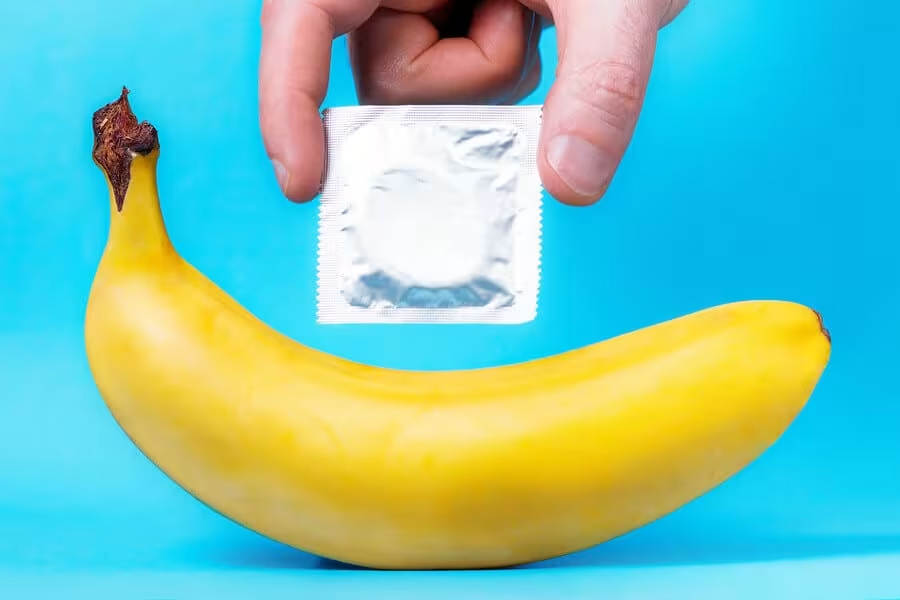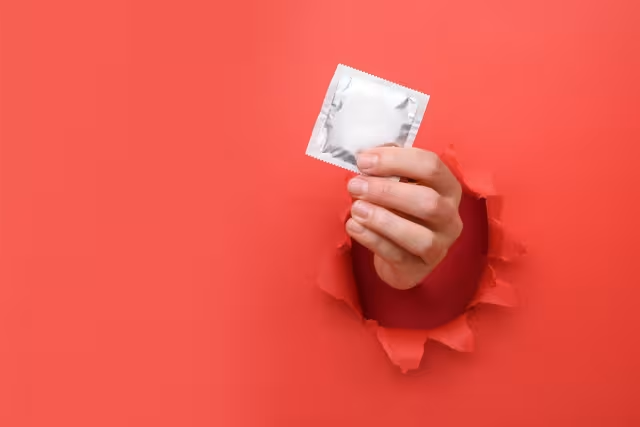National Condom Month
With February being national condom month, it’s a great time to talk about how the simple act of using condoms can support safe sex and protect against unwanted pregnancy and STDs.
When used properly, condoms have an impressive, effective rate of 98%, and they serve as an extremely affordable way to practice safe sex. With the average condom costing only $0.45 a piece, it’s a method that’s available to everyone.
Unfortunately, research shows that condoms aren’t used as often as they should be.
Part of the issue comes from the fact that only 39% of high school students are actually shown how to use them properly, and only 20% are using them in combination with other pregnancy prevention methods such as birth control.
We’re breaking down why condom use is important and why this underused birth control and STD protection method can and should be used more often.
Condoms Protect Against More Than Unwanted Pregnancy
While we all know that condoms can help protect against unwanted pregnancy, condoms also play a role in protecting against STDs.
When used properly, condoms are 98% effective in preventing chlamydia as well as gonorrhea.
However, condoms don’t protect against the spread of all STDs, such as genital warts, herpes, and syphilis, which is why regular testing is important if you are concerned about your risk.
Here at PlushCare, we offer both testing and treatment options. Now you can get testing and treatment right from the comfort of your own home.
We offer treatment for different STDs, including genital herpes, chlamydia, gonorrhea and many more.

Condom Do's and Don'ts
We know that condoms are effective at preventing unwanted pregnancy and certain STDs, but proper use is important.
According to the CDC, here are some condom do’s and don'ts to help you make sure that you are using them properly.
Condom Do’s
Do use a condom every time you have sex.
Do put a condom on before you have sex.
Do make sure that you check the expiration date on the condom package before using.
Do check for tears before use.
Do store condoms in a cool, dry place.
Do use a water or silicone-based lubricant to help prevent a condom from breaking.
Condom Don’ts
Don’t use more than one condom at one time.
Don’t reuse a condom.
Don’t use oil-based products as lubricants (such as baby oil or lotion) as these can increase the risk of the condom breaking.
Don’t use nonoxynol-9 spermicide, which can lead to irritation.
Don’t store condoms in places where they are exposed to heat and friction, such as a wallet.
Talking to Your Partner About Condoms and Safe Sex
An important part of condom use is speaking to your partner about safe sex. It’s important to talk with your partner about why using condoms is important even if birth control is being used, and how it can help keep both partners safe.
While it can be uncomfortable, especially if one partner doesn’t want to use protection, it’s part of being in a responsible and respectful sexual relationship.
Having the conversation outside of the bedroom will help you both get on the same page before engaging in sex.
Condoms For All
When most people think of condoms they think of traditional male condoms meant to be worn on the penis. However, female condoms also exists and when used correctly are very effective.
Female condoms are great at protecting against STDs for female couples who may not need protection from unwanted pregnancy but still wish to practice safe sex.
They are also great for heterosexual couples looking for an alternative to traditional male condoms.
Condom Sizing

Another important part of making sure that you are using condoms properly is getting the right condom size.
Condoms come in different sizes and styles, so trying different ones to find what works best for you will help ensure that they are being used, and being used properly.
Condom Fun Facts
Ok, so now that you know the basics of condom use here are some condom fun facts you may not already know.
Did you know that 450 million condoms are sold in the US each year? That’s a lot of condoms!
The first condoms were made from sheep intestines. Yep, you heard that right. We’ve come a long way with most condoms now being made from latex or polyurethane.
Planned Parenthood states that most people claim that they enjoy sex more when they are protected because they don’t have to stress about unplanned pregnancies, or many STDs.
What to Do if You Suspect You Have an STD
If you suspect that you have an STD, it’s important to get tested as soon as possible and to stop engaging in sex. You can book an appointment online to get STD testing without having to sit in an uncomfortable waiting room.
How would you know if you had an STD? Here are some common symptoms to watch out for.
Bumps, sores, or warts in the genital or anal area, or around the mouth.
Discharge from the vagina or penis.
Genital itching.
Vaginal bleeding other than monthly menstrual bleeding.
Skin rash.
Experiencing painful urination.
Painful sex.
Jaundice (yellowing skin)
Chills and or fever.
Our world-class PlushCare doctors can help by ordering any necessary lab tests and providing treatment if necessary.
Read More About STD Testing
Sources:
PlushCare is dedicated to providing you with accurate and trustworthy health information.
Your Guide to Sexually Transmitted Diseases. Web MD. Accessed February 5, 2020 at https://www.webmd.com/sexual-conditions/sexual-health-stds#1
Fun Facts About Condoms. Planned Parenthood. Accessed February 5, 2020 at https://www.plannedparenthood.org/uploads/filer_public/54/38/5438b72e-82d6-4747-97bd-1a42c86d844c/fun_facts.pdf
American Sexual Health Association. Accessed February 5, 2020 at https://www.ashasexualhealth.org/
Spicing Up National Condom Week. National Coalition of STD Directors. Accessed February 5, 2020 at https://www.ncsddc.org/adding-spice-national-condom-week/
Male Condom Use. CDC. Accessed February 5, 2020 at https://www.cdc.gov/condomeffectiveness/male-condom-use.html



